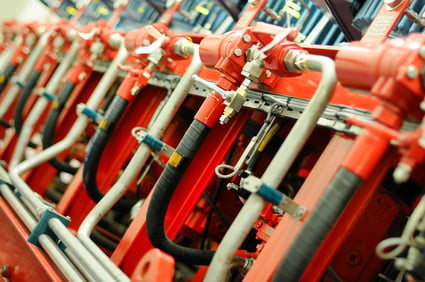This guest post is authored by Ted Dimm, field instrumentation marketing leader for Honeywell Process Solutions.
Specifying the right pressure transmitter for replacement of non-working units to install in a plant-wide upgrade or for use in a start-up facility is critical. Seemingly small differences in accuracy and performance can have significant long-term effects. Product quality can vary, and downtime for troubleshooting and repairs can increase. Money, time and other equally precious resources can burn up quickly, affecting the efficiency, profitability  and sustainability of the plant. Pressure and other critical measurements must be reliable, stable and accurate.
and sustainability of the plant. Pressure and other critical measurements must be reliable, stable and accurate.
Those who are tasked with specifying pressure transmitters for industrial applications know how essential it is to get units in place that will work well and long under the harsh and variable conditions of their process plant. However, when considering what transmitter to use in an application, specifying engineers or consultants may perceive a risk in justifying a change to a new brand or type of transmitter (“We’ve used these for 20 years at this plant, and they work just fine!”). And after working with the same equipment for years, the plant crew has learned the ins and outs of the pressure equipment they work with every day, so there may be reluctance to become familiar with new “unknown” equipment. So unless there are obvious plant performance problems easily tied back to the status quo, the human tendency for inertia can influence a company to just keep ordering “more of the same.” The trouble with this strategy is that technology marches on – and due diligence must be done every time equipment is purchased to make certain that buying decisions are based on the current state of technology, and not on history or tradition.
There are budget concerns in any decision, so the cost vs. performance trade-off can also be a determining factor in specifying equipment. The accuracy vs. investment conundrum should never totally drive the purchasing decision, because in the long-run the costs associated with a less accurate or less hardy pressure transducer will be outweighed by its negative impact on the plant’s processes, financial position, and maybe even employee safety.
So considering the known impact that a pressure transducer has on plant performance and optimization, the manufacturer’s specifications are a logical place to start in the decision process. Why not just line up all the product brochures, compare them, and select the one with the tightest specifications?
The answer is that product specs are a good starting point for analysis. But they don’t tell you the whole story – and what they (unavoidably) leave out is the answer to questions like these: How will this transmitter work at MY plant under MY operating conditions? Will it work in the dirty, noisy environment of the process line? What happens to the pressure output accuracy when ambient temperature or static pressure changes? Is the effect of these changes on output accuracy uniform across a range from zero to span? What happens if the operator changes the span after installation?
It doesn’t pay to make hypercritical decisions about pressure transmitter accuracy based simply on the manufacturer’s specification sheets, especially when the specs were written while the product was calibrated and tested under controlled laboratory conditions. An industrial plant is many things – but it is definitely not a laboratory.
The five elements with a meaningful effect on the overall performance of pressure transmitters are:
- Turn-down-ration effects (resulting from customer-selected span setting)
- Temperature effects on zero
- Temperature effects on span
- Static pressure effects on zero
- Static pressure effects on span
Compensating for these influencing factors is the key to accurate measurements from zero to span. Sensors, which lie at the heart of the transmitter, are now available with built-in automatic compensation for these variables so that the output is accurate and dependable, potentially saving everything from lives to dollars and cents. Keep your facility up and running with the lowest maintenance costs, the least installation headaches, and best overall accuracy in the real world by using a pressure transmitter with compensation at the sensor level. Your plant is probably down and dirty – and you need a reliable pressure monitoring source that will perform under whatever conditions come its way.
 About the Author
About the Author
Ted Dimm, field instrumentation marketing leader for Honeywell Process Solutions, has 38 years of experience in the process industry. He has previously held various marketing and engineering roles with Fischer & Porter and Ametek. Based in Fort Washington, Penn., Ted earned a bachelor's degree in electrical engineering from Lehigh University. Contact Ted at: ted.dimm@honeywell.com.



